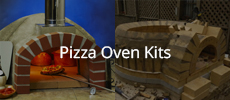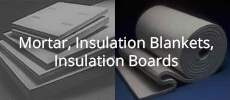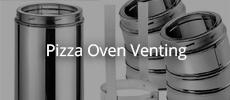Thank you David and Alomran for your inputs. Very much appreciated! Your inputs make me adjust my course of action. Very valuable.
I probably won't go for a cast pipe then since I would have to insulate around it. The perfect option would be to have a SS pipe or a cast pipe and then wrap it in some wool or vermiculite/perlite cement and then stucco that and place brick shavings on the outside to look 'pretty'. But that could easily get messy and fail. So I think I will lay two courses of firebrick, grind a 14cm hole in the first course and 16cm hole in the second and then place a pipe form of 15cm dia wrapped in plastic and a 2mm cardboard and then cast an 'anchor'. Once that's set, remove the form, place the ss pipe and push in some 5:1 perlcrete to support and insulate the chimney around the cast anchor. And then get a storm collar and it might work that way.
This weekend I am lone dad, as my wife is going to a seminar, so won't be a chance for me to continue working on the this. But I will be thinking about these possible next steps while playing with lego blocks instead then.
Announcement
Collapse
No announcement yet.
Question about flue depth to oven size ratio
Collapse
X
-
Steel and refractory materials can be a problem when used together. Firstly steel can corrode and heat accelerates any reaction so stainless is the preferred type. The expansion rates of both materials are similar so steel reinforcement in concrete construction like bridges is not a problem in normal conditions where temperature changes are relatively slow. However in our situation where temperature increases at the rate of 300 C per hr are not uncommon the vastly different thermal conductivity plays a big part in the materials being incompatible. The steel being highly conductive will therefore expand way faster than any refractory material that surrounds it, placing stress and possible fracture of the material. The standard reinforcing for refractory is therefore smelt extract fibres commonly called stainless needles. Being small they have a far greater surface area and can therefore conduct their heat more easily to the less conductive refractory that surrounds them. Something like chicken wire which is of a small diameter is a cheaoper alternative provided the temperature does not exceed the melting point of the zinc (around 400 C) which provides some corrosion resistance. In practice that part of the oven will not see those kind of temperatures and it works fine.
Regarding an expanding flue pipe I found from experience with the second and third ovens that I built, that the flue pipe cracked the casting around it. I did use 0.9 mm thick pipe and cast material directly around it. Whilst the normal stainless pipe thickness at 0.55mm is half that and would have less power when it expands, I now make sure there is a little room for expansion between the pipe and the casting. This can easily be achieved by wrapping some thin cardboard, say 2 mm thick, around the pipe and also wrap some sheet plastic around that to make removal easy. Some 5:1 vermicrete then packed around the joint to hold things together does a good job to secure and seal things in place.
Regarding the brick dust and shavings, yes many builders have used this successfully in place of the clay portion in home-brew and yes some small brickbats can be used as larger aggregate pushed into the mix on placement. Some small pieces of chicken wire pushed into the centre of the casting would work ok, but hard to get into the rather small space.
Do not use the nylon fibres, they will melt as you say. Alkaline resistant glass fibres are more suitable but not mandatory. A cast home-brew pipe is an option, as is a clay drainage pipe of the appropriate diameter, although either must be insulated on the outside or it will crack. The stainless pipe obviously will not crack and therefore does not require insulating.
- Likes 1
Leave a comment:
-
I am not an expert on oven construction, in fact I have achieved a chain of blunders while building mine. However, studying materials, I would refrain from adding any steel within any construction that involves heat variations. It will expand and contract, which will imminently cause it to crack. This is from a scientific point of view. As for experience, my brother had, against advice, built an oven with a steel shell, guess what, the entire dome lifts of with its brick and contracts with big cracks in the mortar. I would not put any steel near anything close to heat. Again I'm no expert on ovens!
Leave a comment:
-
DavidS may I request for your opinion?
lm at the point where i have to decide on chimney. I will either (second option below) cast a 10cm tall 'footer/anchor' as you have recommended earlier and fit in a 15cm ss pipe. I will cast it between two courses of bricks where the upper most course is cut circular to accommodate the size of the cast support piece and the bottom course is a bit smaller to mortar the footer right onto the course. I have two pipes as forms, one is 15cm dia and the other is 20cm dia as outer piece. The cast support pipe will then be about 2-3cm thick. You can see in the image where I'm at with the flue construction; I would begin the chimney cuts in the bricks in the next course or the one after that...
Having gone through the oven build to this stage I have lots of brick dust and shavings, small brick pieces, you name it. I was thinking to add some of that into the 3:1:1:1 homebrew as aggregate to emulate the structure of a firebrick for the cast pipe footer. Good idea, or not? I would put that in stead of the fireclay then, aggregates of differing size, from sand to 2-3mm probably. Will this add strength to the cast pipe? I've also thought about adding a wire mesh in the middle of the cast, perhaps something as fine as mosquito net from an old window, or maybe something larger. Will that add strength or compromise the cast given metal mesh may expand differently than the homebrew if hot? I also have nylonfibers, but I guess they would just melt in a hot flue pipe isnt it?
Last question: Can I cast a longer piece of pipe off of homebrew in the above diameter dimensions/thickness, say 40-50cm cast pipe to use in stead of a ss pipe as chimney piece? Or would that just crack?
Given your experience with cements, concrete, kilns and the likes I think your input would help me!
Arigatou~1 Photo
Leave a comment:
-
I should also add that imo there are a lot of wood fired oven faces that would be less sooty if the practice of preheating the flue was followed.
- Likes 2
Leave a comment:
-
I also think that the 12" flue is needed for this humungus build. I don't know of a formula for the oven size to flue diameter. But, looking at the recommeded ranges for flue diameters vrs. oven diameters it ranges from 17 to 19%. That would place this oven at about 14" for a flue diameter. Regardless of what size you go with, practice preheating the flue before lighting a fire in the oven. There are a lot of residential fireplaces that are not in use today because the owners don't know how to start a fire.Last edited by Gulf; 02-16-2020, 08:31 PM.
- Likes 1
Leave a comment:
-
The cross sectional area of a 12” pipe is around 80% greater than that of a 9” pipe and as diameter is a greater driver of draw than height, you might find it inadequate. As you’ve already purchased it, try it out and if it’s inadequate, increase the height and if that doesn’t help enough replace it with the larger diameter. I think you’ll probably be ok as you are unlikely to over fuel such a large oven anyhow.
- Likes 1
Leave a comment:
-
If I was in your position, I'd try to go with the 9" chimney since you've already bought it. But to compensate I'd add height to the pipe itself, like 1,5m, and I'd also make sure the smoke chamber is big enough to accommodate more gases. But since your flue area anyway will be in relation to the oven size itself, it would look natural to make a large-ish smoke chamber wouldn't it. I'd also do a transition from flue to pipe that is well above 9" to get a funnel effect, and to ensure that there is possibility to upgrade to a larger chimney dia in the future. That means whatever you cast or create to fasten the chimney to the flue area should be large enough to potentially accommodate more than 9 inches. How exactly, that would demand some thinking and sketching. Just my 2 cents...
- Likes 1
Leave a comment:
-
Originally posted by david s View PostThe bigger the chamber the more efficient it becomes. A 30 cm diam flue should be quite sufficient. You can always increase its height to increase the draw too.
Could increasing the height increase the (Venturi effect) reduction in pressure that results in the flows through a constricted section?
Would that compensate on a smaller radius flue?
I have purchased the 9inch diameter nice stainless steel pipe and getting a 30cm diameter would be highly expensive.
Leave a comment:
-
The bigger the chamber the more efficient it becomes. A 30 cm diam flue should be quite sufficient. You can always increase its height to increase the draw too.
- Likes 1
Leave a comment:
-
I am thinking, ovens of 32-36 inches work with around 6 inch flue dia. That's a flue dia roughly 15-20% of the oven dome diameter, isn't it. If you take 15-20% of your 197cm that would be between 32-40cm diameter, roughly...Originally posted by Alomran View Post
Hi, Yes you are correct, the area of a circle is Area =πR2, where π= 3,14159.... but how did you work out the size of flue diameter of 6" from the 32-36" diameter of the dome? What is the formula that works out the flue diameter from the dome's diameter? My dome's diameter is 197cm, any idea how to work our the flue's diameter?Last edited by Yokosuka dweller; 02-14-2020, 01:41 AM.
- Likes 1
Leave a comment:
-
Forget that formula of 10 or 15:1 oven opening to flue cross sectional area. It is a rough one for fireplaces but doesn’t apply for ovens.A fireplace is designed to maximise the heat pushed out of the entry whereas an oven needs to retain the heat inside the chamber. My small oven has a 5” flue, but a mouth I’d consider large in relation to the chamber volume only 5 x the area.
For kilns, where minimising heat loss and resulting fuel consumption is even more important the inlet is usually slightly smaller than the outlet, both being adjustable. For an oven a priority is to make the chamber accessible, so a size that you’re comfortable with using, regardless of heat loss is the most important. Whilst on the subject of accessibility I believe that the entry should also be as shallow as possible so you don’t have a deep tunnel to negotiate before getting to the inner oven chamber.
- Likes 1
Leave a comment:
-
Thats a massive oven you're building there Alomran. I read somewhere on the forum that flue inlet area should be between 1/10-1/15 of front fireplace 'inlet' area. So there logically must be some relationship between the amount of air getting into the oven and gases being able to funnel up and away for combustion to go on smoothly. So maybe it would help you if you know the area of your external oven opening and from that calculate the necessary flue/chimney space needed to allow your oven to breathe, as it were. I did try to check online and there is 'some' information on this. but tbh it is out of my depth. Maybe someone like DavidS would know the exact formula to use.
- Likes 1
Leave a comment:
-
Hi, Yes you are correct, the area of a circle is Area =πR2, where π= 3,14159.... but how did you work out the size of flue diameter of 6" from the 32-36" diameter of the dome? What is the formula that works out the flue diameter from the dome's diameter? My dome's diameter is 197cm, any idea how to work our the flue's diameter?Originally posted by Yokosuka dweller View PostI know from reading FB's guide that oven dome size 32-36" can use 6" flue. Diameter of circle is calculated Pi * Radius squared, no?
I'm not sure about the arch chamber size, but I've read on here that there should be a space larger than the arch itself, and we can see many different design solutions for that. The bigger the better I guess since then there will be a 'smoke chamber' that can hold some of the smoke instead of it spilling out front oven entrance.
Hope that helps.
Leave a comment:
-
I know from reading FB's guide that oven dome size 32-36" can use 6" flue. Diameter of circle is calculated Pi * Radius squared, no?
I'm not sure about the arch chamber size, but I've read on here that there should be a space larger than the arch itself, and we can see many different design solutions for that. The bigger the better I guess since then there will be a 'smoke chamber' that can hold some of the smoke instead of it spilling out front oven entrance.
Hope that helps.
Leave a comment:





Leave a comment: